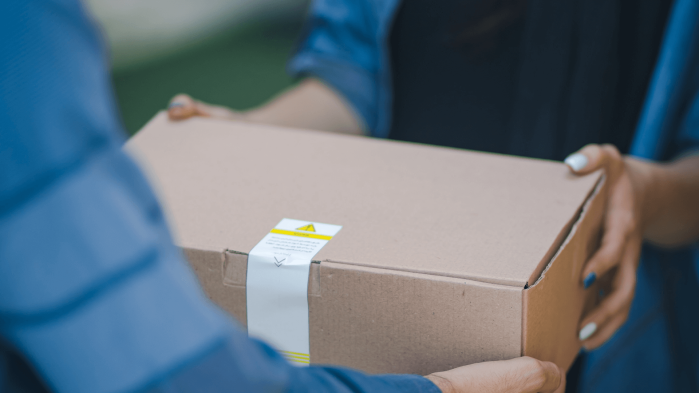Even though current surveys show that the majority of companies in the logistics sector see themselves as pioneers when it comes to digitalisation, this is not really true – on the contrary, the sector appears to be underperforming. According to their own statements, companies often lack the time and financial resources, and the lack of IT specialists is also a problem. In this article, we show the positive effects of digitalised logistics in terms of productivity and efficiency, how much potential there still is in this area and how the “digitalisation challenge” can be tackled.
It’s a busy time at the gate: one vehicle after another arrives and the gatekeeper has his hands full registering the incoming lorries. In a non-digital world, this would have been the time for paper registration forms – but there's a better way today!
With the help of yard management software, the registration process for lorries and drivers is digital. The positions of the individual vehicles in the yard are always clear: the locations of trailers and swap bodies can be marked on maps, and pre-collection processes can also be defined with the software. At the graphical control centre, the yard scheduler can see the status of vehicles, ramps and available space at any time. This makes it much easier to maintain an overview and enables the transport process to be optimised from the factory gate to the unloading point. Read the following paragraph to find out how this works in practice.
In principle, smart yard control starts before the yard, namely at the barrier. Smart barrier systems work with cameras that recognise licence plates. This eliminates the need for staff to be present at the gate to decide whether access is granted or not. If the freight forwarders making deliveries and collections have booked a fixed time slot using the time slot management system, they can enter their data (such as load, licence plate number, etc.) when registering – the barrier automatically recognises that the vehicle should be granted access to the yard. A check-in terminal, where drivers can enter their data on spontaneous arrival, takes care of the remaining cases.
Communication with the driver is also handled by the system. The driver receives information about which ramp or car park to go to via an app notification or text message. Time stamps can be used to track all of the lorry’s steps in the yard, which makes yard management significantly easier.
One thing is essential for this intelligent yard management system to work: a stable Wi-Fi infrastructure. Because without reliable Wi-Fi, the potential of yard management, which helps to smoothly organise the process from the factory gate to the unloading point, cannot be utilised.
The larger a company becomes, the more locations it usually has. Logistics centres are becoming increasingly complex in terms of their structure – and so is digitalisation. It’s not just the immense size that they sometimes have nowadays, but also the number of processes and quantities to be handled that are increasing so quickly that it can soon become dizzying. If each of these locations were to be equipped, configured and maintained separately with (WiFi-)technology, there would be different standards and a higher susceptibility to errors on the one hand, and on the other, the effort involved would be enormous.
Virtual private networks (VPNs) are created to enable the secure networking of different locations in a wide area network (WAN), even over long distances. The connection is secured in such a way that unauthorised persons have no access to the communication and the shared data. Monitoring software makes it possible to keep an eye on the connections at all times. This makes it possible to react quickly before a failure occurs. The individual configurations of the access points and switches inside the logistics WiFi can also be easily implemented remotely. WAN backups ensure that the connection is permanently stable. This means that work can continue with the usual high network performance despite any localised disruptions.
But it’s not just the different locations of a company that should be networked with each other; communication within a location (Local Area Network = LAN) must also function – and in real time. A solid WiFi infrastructure must be carefully planned so that the network ultimately performs as desired. For this purpose, all aspects such as the structural conditions, the number of users and logged-in devices, the bandwidth requirements and the signal strength and range are included in the planning. Here you can read how we tackle a WiFi-project.
It is not always necessary to have IT specialists on site to drive forward the digitalisation of a business – it can also be an option to outsource these issues to a managed services provider so that you can concentrate fully on your core business again. And with the support of digitalised systems! This can be a viable option, especially for smaller or medium-sized companies that would not be able to afford their own IT department. There are many models for this. It is up to you to decide whether you want to outsource data protection issues or outsource the entire operation and maintenance of your IT.



